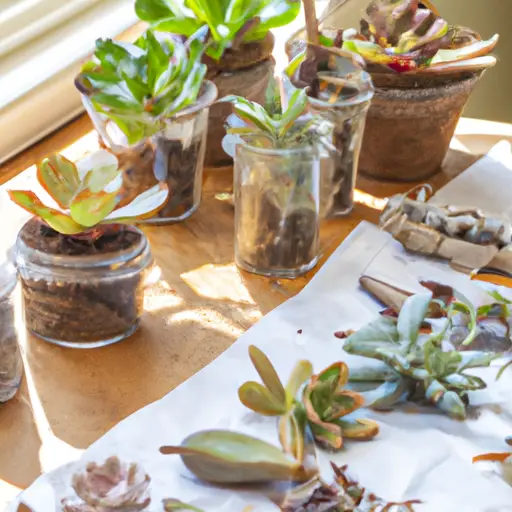Rooting Succulents: Secrets of Successful Propagation
Succulents have gained immense popularity among plant enthusiasts and home gardeners alike due to their unique shapes, low maintenance requirements, and beautiful colors. These hardy plants have adapted to survive in arid conditions, making them ideal for those with busy schedules or those who may not have the greenest thumb. One of the most fascinating aspects of succulent plants is their ability to propagate easily through rooting. In this article, we will uncover the secrets of successful succulent propagation and provide you with all the information you need to successfully grow your own succulent garden.
Choosing the Right Cutting:
Successful propagation begins with selecting the right cutting from a mature and healthy succulent plant. Look for stems that are firm and plump, preferably without any signs of damage or decay. Avoid taking cuttings from stressed or weak plants as they may struggle to root properly.
Preparing the Cutting:
Once you’ve identified the perfect cutting, it’s important to prepare it correctly before attempting to root it. Using a clean and sharp pair of scissors or pruning shears, cut just below a node – these are small bumps on the stem where new growth emerges. It is crucial to ensure that your tools are clean and disinfected to prevent any potential diseases from being transferred to your cutting.
Allowing Time for Callousing:
After taking your cutting, it’s essential to let it sit out for a few days in a cool and dry location away from direct sunlight. This step allows the cut end of the stem to callous over, which helps protect against rotting during rooting.
Choosing the Right Soil:
Succulents require well-draining soil that mimics their natural habitat. A mix specifically designed for cacti and succulents is ideal, but if you prefer making your own mix, consider combining equal parts of potting soil, coarse sand, perlite or pumice, and a small amount of peat moss. This mixture provides the right balance between retaining moisture and allowing excess water to drain away.
Rooting the Cutting:
Once the cutting has properly calloused, it’s time to root it. Create a small hole in the soil with your finger or a pencil, gently place the cut end of the stem into the hole, and cover it with soil. Be sure not to bury the cutting too deep as this can hinder its ability to root.
Providing Optimal Growing Conditions:
To ensure successful rooting, provide your newly planted cutting with optimal growing conditions. Place it in a bright location with indirect sunlight, as too much direct sun can scorch the cutting. Avoid excessive watering as succulents are prone to rot if they sit in waterlogged soil. Instead, water sparingly when the top inch of soil feels dry to touch.
Patience and Care:
Propagation is a slow process that requires patience and care. It may take several weeks for roots to develop and establish themselves. During this time, be mindful of overwatering or disturbing the cutting unnecessarily. Once roots have developed and established, you can gradually introduce your new succulent to more sunlight and adjust watering accordingly.
Incorporating these secrets of successful succulent propagation into your gardening routine will allow you to expand your collection and share these beautiful plants with friends and family. Remember that not all cuttings will root successfully, so don’t be discouraged by occasional failures – it’s all part of the learning process. Enjoy experimenting with different species and techniques, and soon you’ll be witnessing new succulent growth sprouting from cuttings you thought were nothing more than discarded stems!













